Boy's Tobacco Pipe Item Number: E1659-0 from the National Museum of Natural History
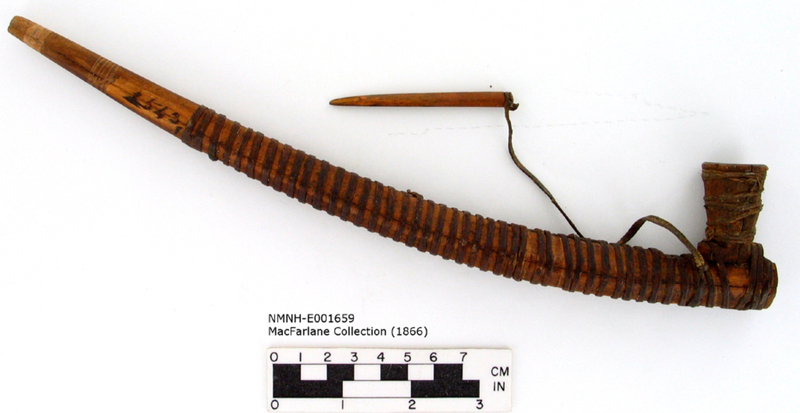
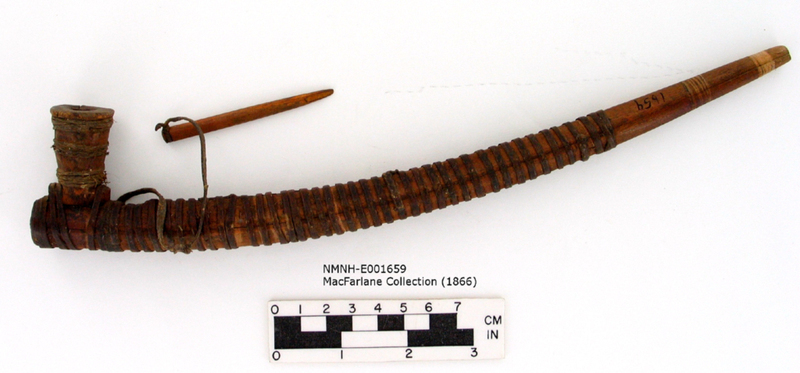
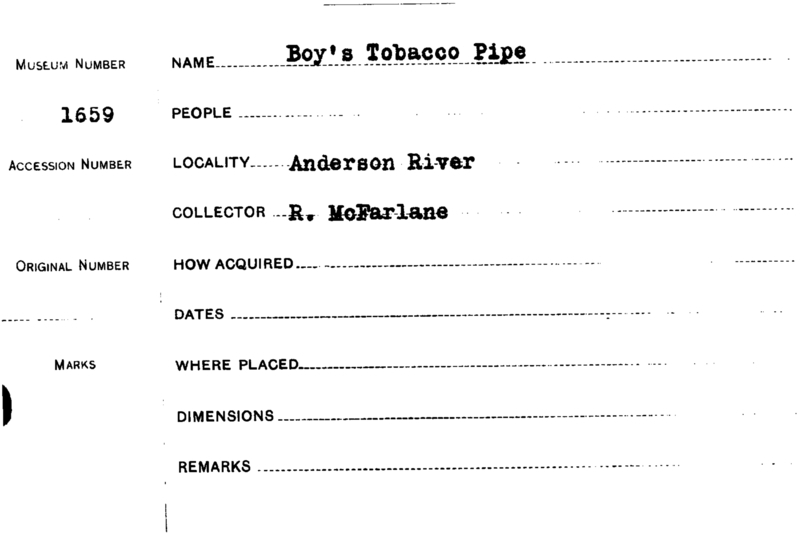
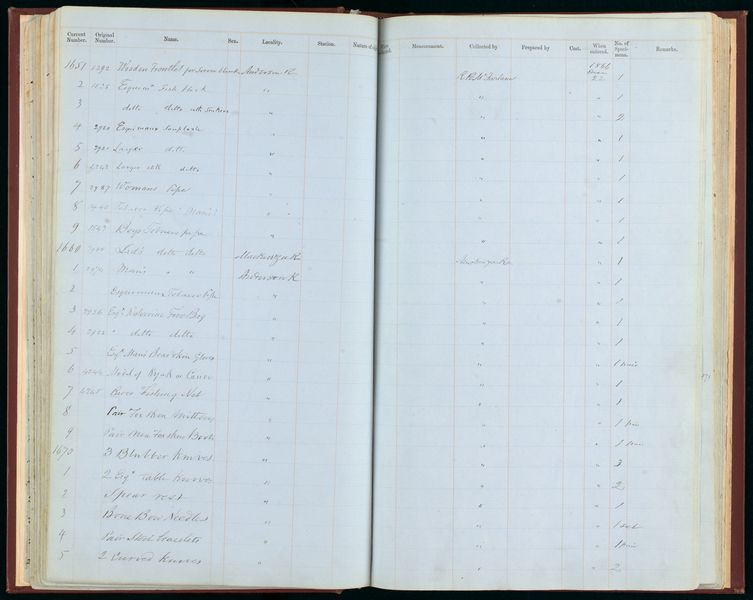
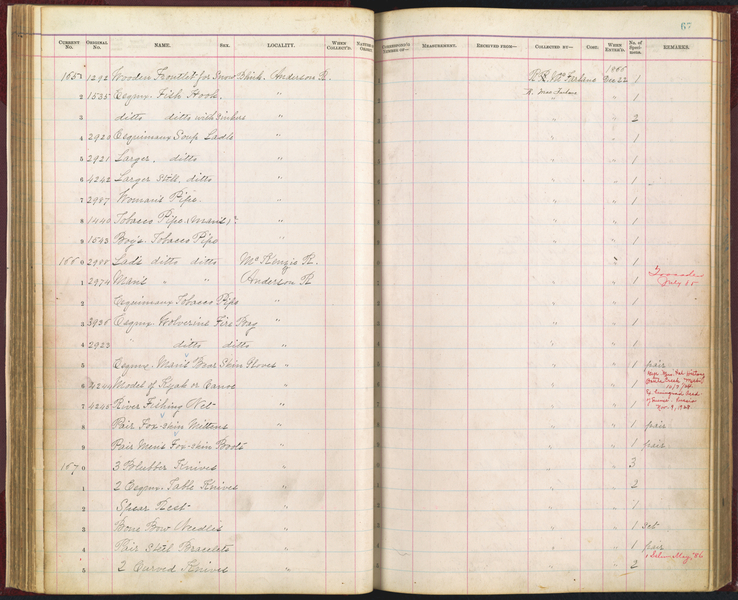
Notes
Source of the information below: Inuvialuit Pitqusiit Inuuniarutait: Inuvialuit Living History, The MacFarlane Collection website, by the Inuvialuit Cultural Resource Centre (ICRC), Inuvik, N.W.T., Canada (website credits here http://www.inuvialuitlivinghistory.ca/posts/12 ), entry on this artifact http://www.inuvialuitlivinghistory.ca/items/232 , retrieved 12-17-2019: Pipe with a bowl and pipe stem both made of wood (?). The bowl is made in two pieces that are held together by a wrapping of braided sinew. The pipe stem is in two longitudinal sections that have been bound together with a thong made of hide, which also wraps around a flange at the base of the bowl, fastening it to the stem. A pick made of bone or antler is attached to the pipe by a hide thong. This is identified as a 'Boy's Tobacco Pipe' in the MacFarlane Collection catalogue. More information here: http://www.inuvialuitlivinghistory.ca/item_types/2: Inuvialuit first obtained pipes and tobacco in the 1800s through indigenous trade networks that stretched through Alaska and as far as Siberia. The MacFarlane Collection includes twenty pipes of this northern style. The bowls are made from metal, wood or stone, and with one exception the pipes have curved wooden stems split along their length and held together with a skin or sinew wrapping. Commonly a pick used for tamping tobacco and cleaning the bowl is attached to the pipe.
Item History
- Made in Northwest Territories, Canada
- Collected in Northwest Territories, Canada
- Received from Roderick R. MacFarlane on December 21, 1866
What
- Name
- Boy's Tobacco Pipe
- Identification Number
- E1659-0
- Type of Item
- pipe
Who
- Culture
- Eskimo, Inuit and Inuvialuk
- Received from
- Roderick R. MacFarlane
Where
- Holding Institution
- National Museum of Natural History
- Made in
- Northwest Territories, Canada
- Collected in
- Northwest Territories, Canada
When
- Acquisition Date
- on December 21, 1866
Other
- Accession Number
- 66A00090